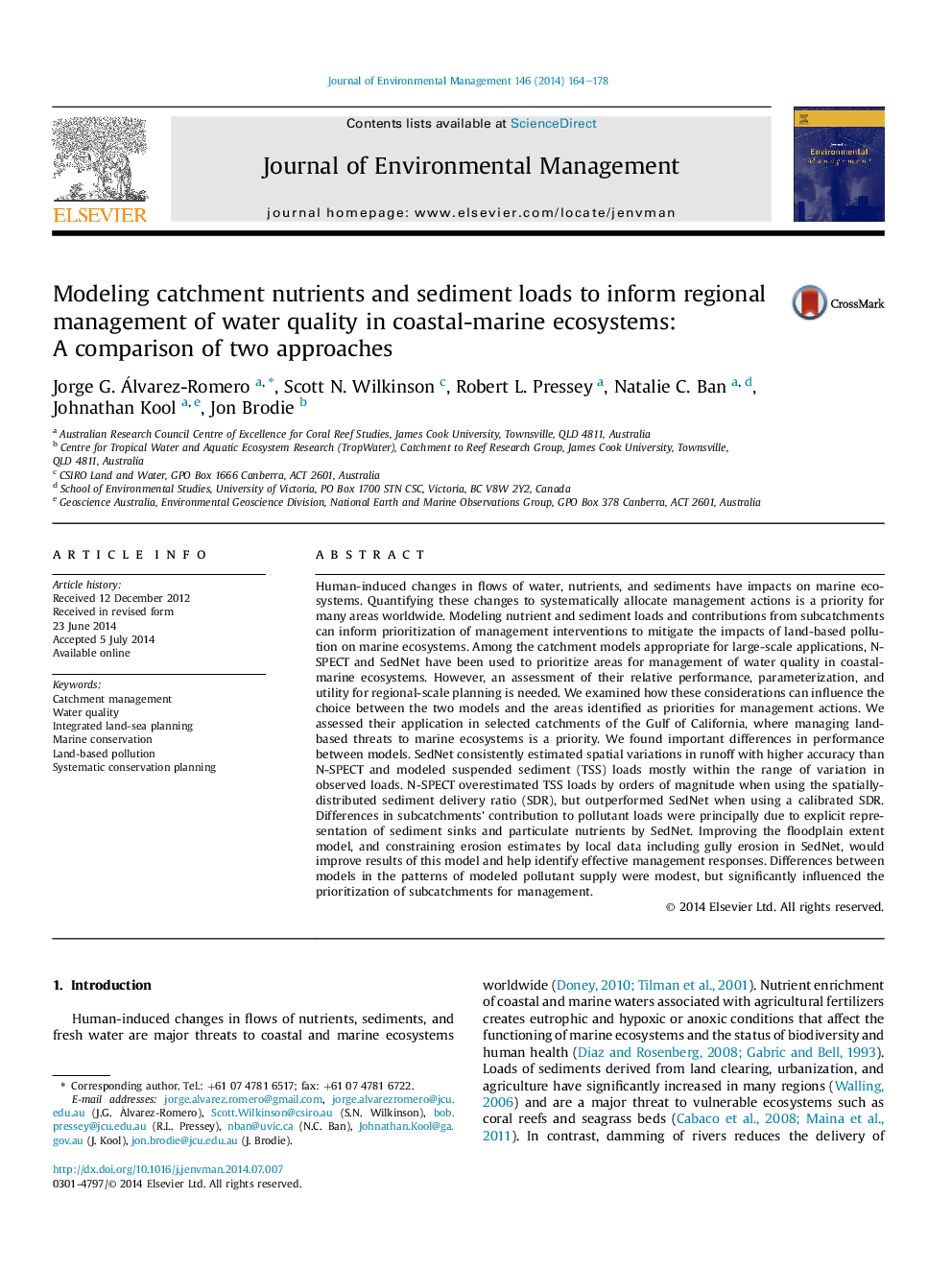| Article ID | Journal | Published Year | Pages | File Type |
|---|---|---|---|---|
| 7483371 | Journal of Environmental Management | 2014 | 15 Pages |
Abstract
Human-induced changes in flows of water, nutrients, and sediments have impacts on marine ecosystems. Quantifying these changes to systematically allocate management actions is a priority for many areas worldwide. Modeling nutrient and sediment loads and contributions from subcatchments can inform prioritization of management interventions to mitigate the impacts of land-based pollution on marine ecosystems. Among the catchment models appropriate for large-scale applications, N-SPECT and SedNet have been used to prioritize areas for management of water quality in coastal-marine ecosystems. However, an assessment of their relative performance, parameterization, and utility for regional-scale planning is needed. We examined how these considerations can influence the choice between the two models and the areas identified as priorities for management actions. We assessed their application in selected catchments of the Gulf of California, where managing land-based threats to marine ecosystems is a priority. We found important differences in performance between models. SedNet consistently estimated spatial variations in runoff with higher accuracy than N-SPECT and modeled suspended sediment (TSS) loads mostly within the range of variation in observed loads. N-SPECT overestimated TSS loads by orders of magnitude when using the spatially-distributed sediment delivery ratio (SDR), but outperformed SedNet when using a calibrated SDR. Differences in subcatchments' contribution to pollutant loads were principally due to explicit representation of sediment sinks and particulate nutrients by SedNet. Improving the floodplain extent model, and constraining erosion estimates by local data including gully erosion in SedNet, would improve results of this model and help identify effective management responses. Differences between models in the patterns of modeled pollutant supply were modest, but significantly influenced the prioritization of subcatchments for management.
Keywords
Related Topics
Physical Sciences and Engineering
Energy
Renewable Energy, Sustainability and the Environment
Authors
Jorge G. Álvarez-Romero, Scott N. Wilkinson, Robert L. Pressey, Natalie C. Ban, Johnathan Kool, Jon Brodie,
